At STH, we have a fairly massive collection of AMD EPYC 3000 series reviews and articles. Check out AMD EPYC 3000 Coverage From STH Your Guide for the most up-to-date list. Before this article, we reviewed all four of the launch single-die solutions as well as six motherboard/ server platforms along with a number of other coverage items. Since the AMD EPYC Embedded 3000 launch, AMD has quietly added a new SKU and removed two SKUs from its lineup making a few other tweaks along the way. All told, from the original 8 SKUs, we now have one new SKU, two SKUs removed, and two SKUs changed for a total of seven.
AMD EPYC 3000 Quick Background
The AMD EPYC Embedded 3000 series is designed to compete in the same segment as Intel Xeon D. It offers a differentiated feature set that spans somewhere between the Intel Xeon D-1500 / D-1600 and Xeon D-2100 series but with unique twists including up to 16 cores, 4x DDR4 channels, 64x PCIe Gen3 lanes, and 8x 10GbE MACs built-in.
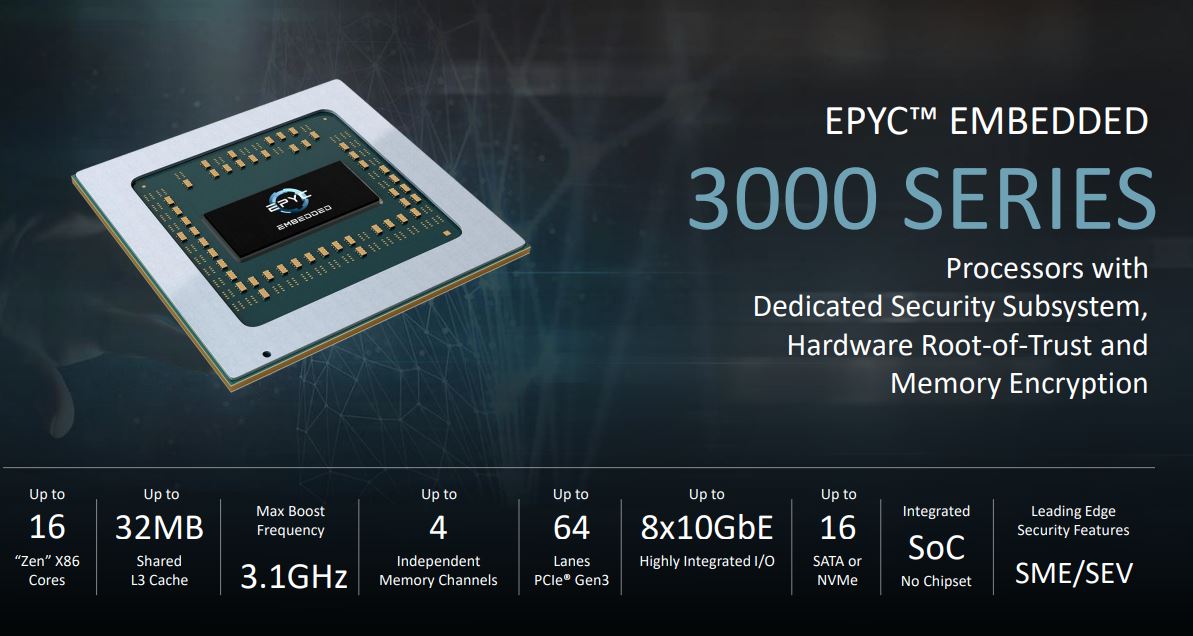
There are two main flavors of the chip. First is the single-die solution. This has one AMD EPYC “Naples” Generation die, somewhat akin to a single die Zen1 Ryzen, that supports up to 8 cores/ 16 threads, 2x DDR4 channels, 32x PCIe Gen3 lanes, 4x 10GbE links. We have tested all four of the single-die SKUs announced at launch.
There is the bigger variant, with two AMD EPYC “Naples” era dies in a package pin-compatible with the single die solution. The concept here is that AMD can offer 4-16 core parts to embedded systems vendors and allow the vendor to place whichever SKU they want. Due to the I/O design, the single die parts will have effectively half of the I/O available but it still lowers the cost of providing a platform for the chips.

The picture above we took during the launch in 2018 and it is the only dual-die EPYC 3000 series picture in our catalog of images.
AMD EPYC Embedded 3000 Series Changes
Here is the initial launch list of eight SKUs that were presented during the launch STH attended in February 2018:
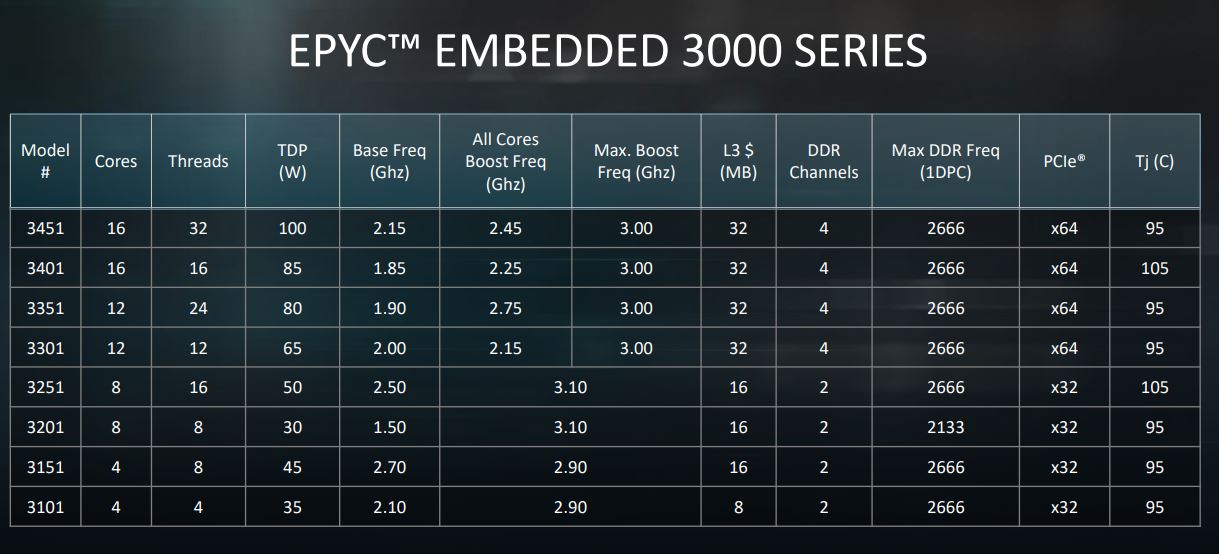
We saw the four single die parts, the EPYC 3251, EPYC 3201, EPYC 3151, and EPYC 3101 release quickly. We did not see the dual die parts. Recently, we saw this overview from AMD on the new chips:
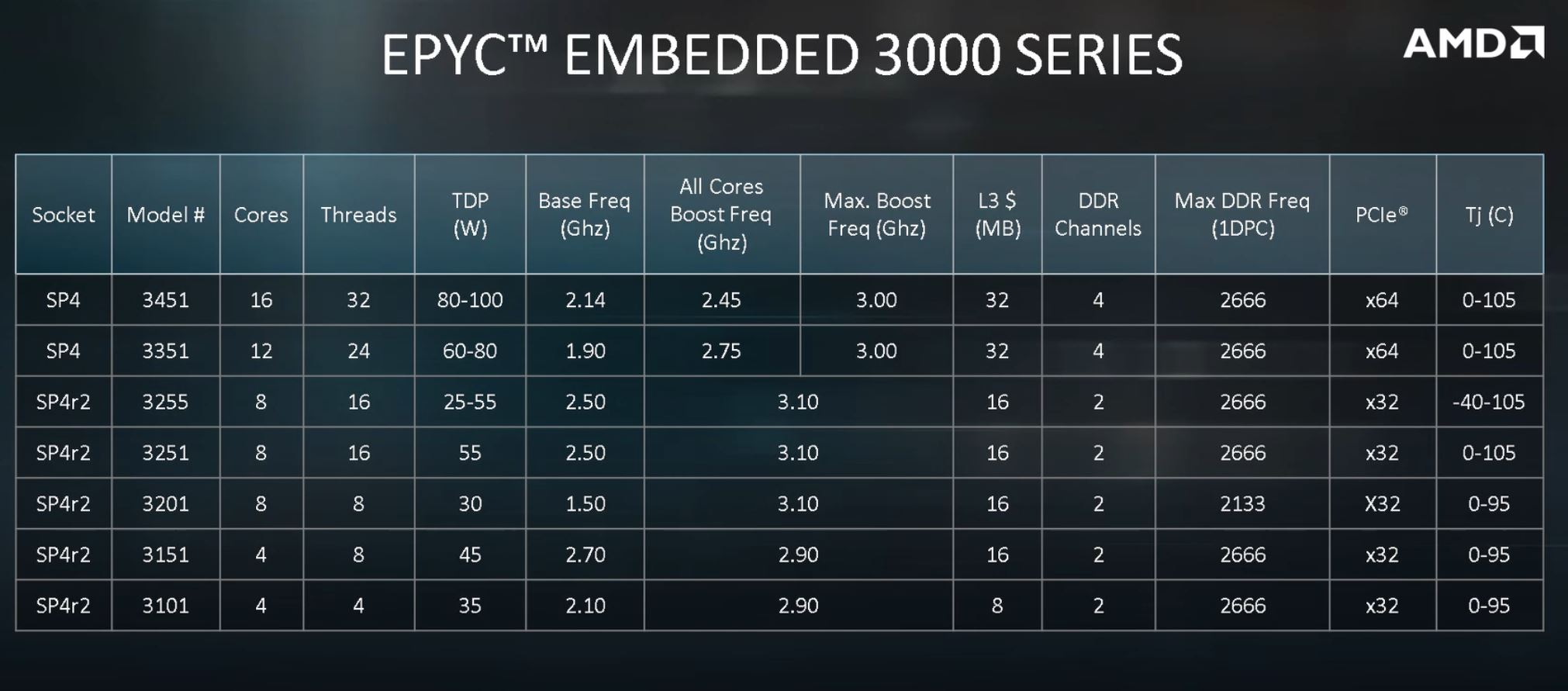
There are four major items to note as this chart evolved.
- First, one can see the addition of the AMD EPYC Embedded 3255 part. This AMD EPYC 3255 part is an 8 core 16 thread single die model that started shipping in mid-2019. The TDP is configurable from 25-55W on this part but many of the compute and I/O specs are similar to the EPYC 3251. Perhaps the biggest change is a TDP that spans from -40-105C to cover industrial embedded use cases.
- Second, there are two SKUs that are missing. The AMD EPYC 3401 and EPYC 3301 are no longer on this chart. Those two parts were effectively merged into the EPYC 3351 and EPYC 3451 parts.
- Third, the EPYC 3451 and EPYC 3351 are dual die parts that have a new feature. The TDPs are now configurable on these parts from 80-100W and 60-80W respectively. Instead of making a hard TDP and clock speed SKU differentiation scheme on these parts, as we see with Xeon D, AMD is making one twelve and one sixteen core part and allowing the customer to configure the TDP. Each SKU also gets a range that is 5W TDP lower on the new versions than we saw on the originally planned EPYC 3×01 dual die parts.
- Fourth, the “socket” column lets us know that the dual die parts use a SP4 socket while the single die parts are SP4r2. With that “r2” we know it handles half of the I/O due to being single die parts. The SP4 commonality shows they are socket compatible. Technically these are BGA parts that are soldered to motherboards so we wanted to be clear that what AMD is calling socket is not actually a field-replaceable socketed part as we see in the EPYC 7000 series.
While the four SKUs that we reviewed have remained unchanged, the remainder of the stack is different than what we saw at launch.
AMD EPYC 3451 and 3351 Update
Many of our readers have been eagerly awaiting the release of the AMD EPYC 3451 16-core and EPYC 3351 parts so we wanted to provide some update on their status. From what we understand, these parts started shipping in late November 2019.
They are showing up. For example, here is the lscpu output from the EPYC 3451:
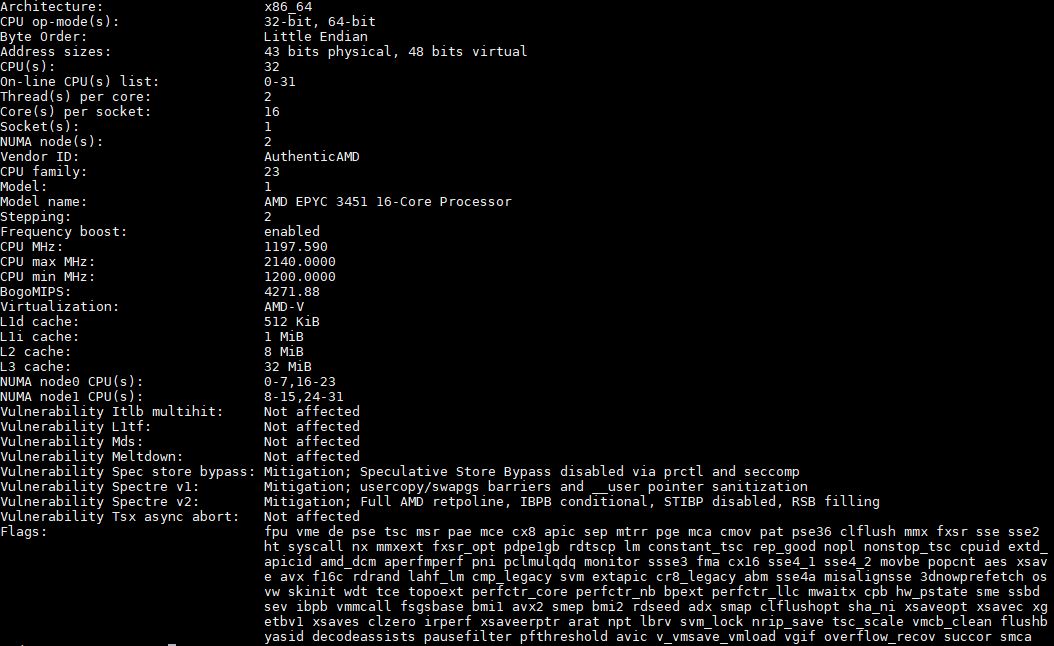
Here is the same for the EPYC 3351:
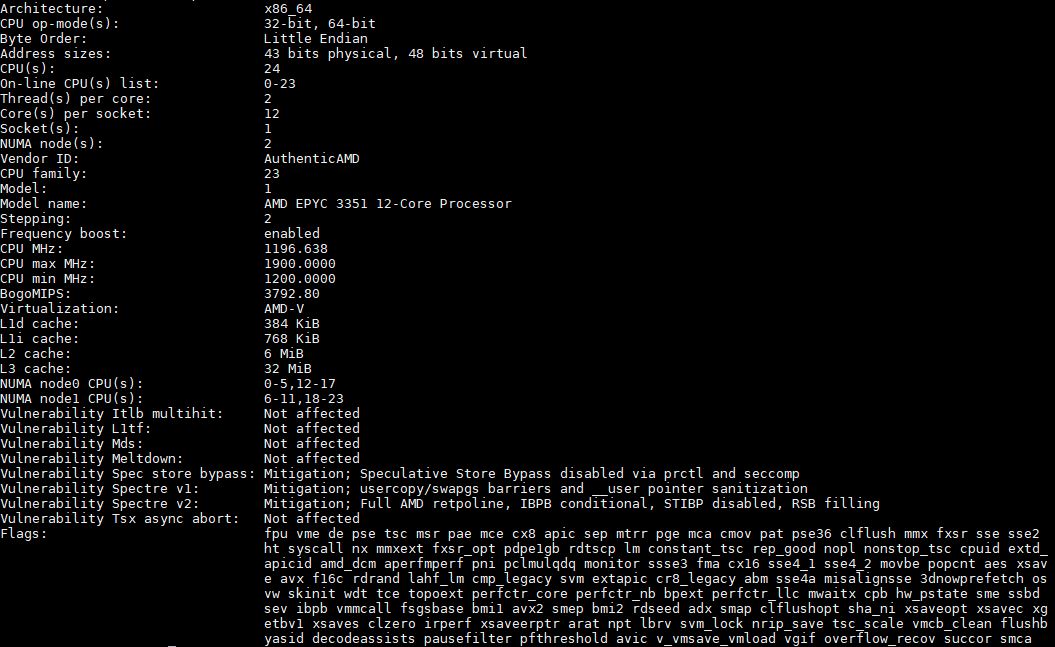
We are still likely a few months away from seeing boards with standard form factors such as ATX and these parts, but there are embedded systems vendors who are starting to offer them.
Final Words
Since this is STH, we are going to leave you with a little world-first. Here is some initial testing of the 12-core and 16-core AMD EPYC 3000 series parts along with the other non-industrial temp optimized SKUs:
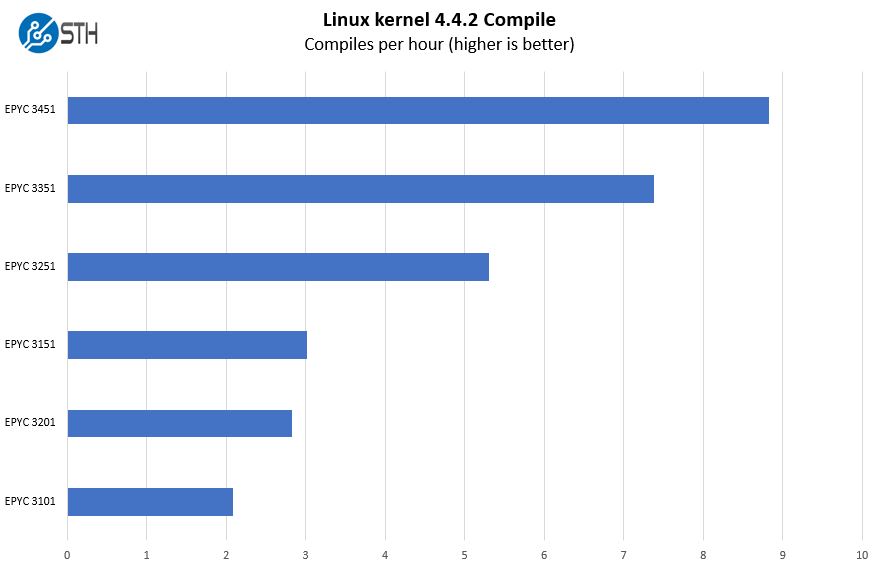
These numbers put both of the EPYC 3351 and EPYC 3451 between the 16-core Intel Xeon D-1587 and the 16-core Xeon D-2183IT on this test.
As always, more coming from STH so stay tuned.

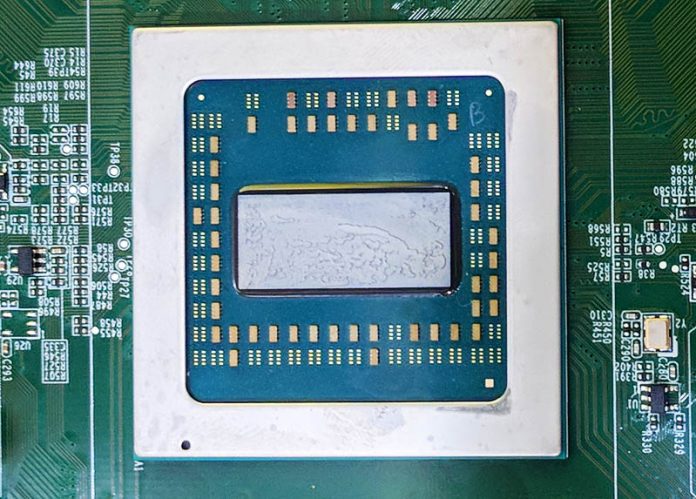



These cpus come with 10gbe network integrated?
AFAIK every Zen die has 4 x 10gbe mac addresses and an ethernet controller. You just need a physical interface. I don’t think I’ve seen a single board make use of this.
@Simon ASRock Rack has 10G PHY interfaces, but their products availability is another story: https://www.asrockrack.com/general/products.asp#AMD
How come no Zen3?
Julian: Zen3? This is industrial/embedded world which is moving with more inertia inside, hence we would be more than glad to receive Zen2 embedded epyc during 2020 at all…
The ASRock Rack EPYC3251D4I-2T, for example, is using an Intel X550 NIC for 10Gbase-T.
Julian, the embedded market is very slow. If you see Intel Atom C2000 series products being sold, those are from 2013. This is a market where vendors expect to sell few at the launch but many over 7+ year product lifecycles.
Product lifecycle is a matter of support and production continuing for a 7-10 year cycle, but you can overlap cycles. Intel still have D1500 while at the same time having D2100, and C2000 at the same time as C3000 etc. AMD are also no stranger with their GX chips too still selling bobcat and jaguar for example in PCEngines machines.
Point I’m trying to make is that these are key edge platforms where there is key growth, and PCIe 4.0 would matter quite a bit. Furthermore, while Ryzen can be used in server space with ECC and IPMI like with the ASRock solution, it’s got almost 0 availability, while Snowy Owl is a lot more available.
This is a fantastic lower power processing solution for edge servers and IOT processing nodes. Supermicro have released extremely low lost pizza box system with Dual 10 GbE ports.
Any chance to cover EPYC3251D4I-2T on STH?
Do you know when are the 7nm embedded epyc-s are expected?
Great content again Patrick.
Hi gyik – I would love to, but awaiting ASRR.